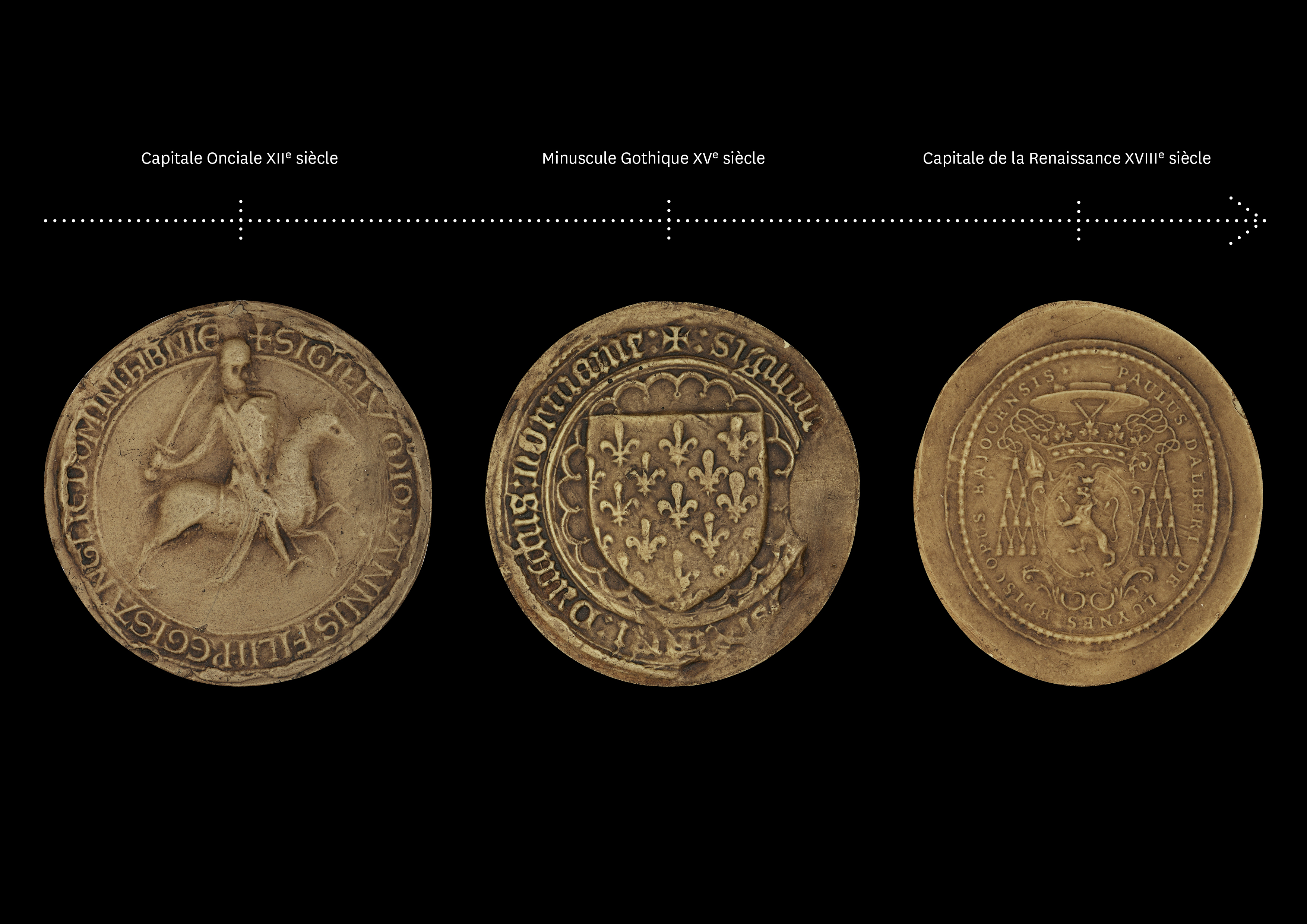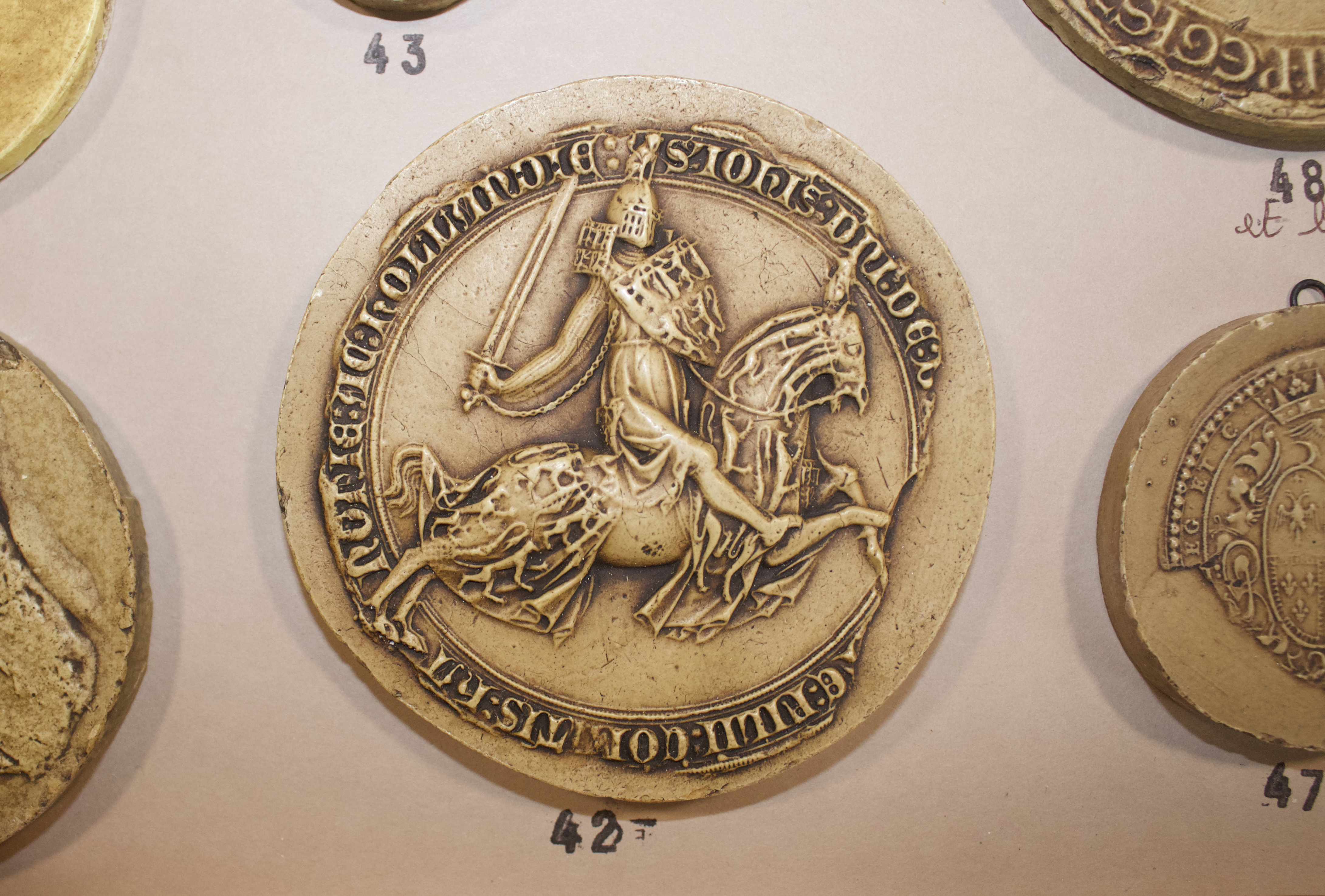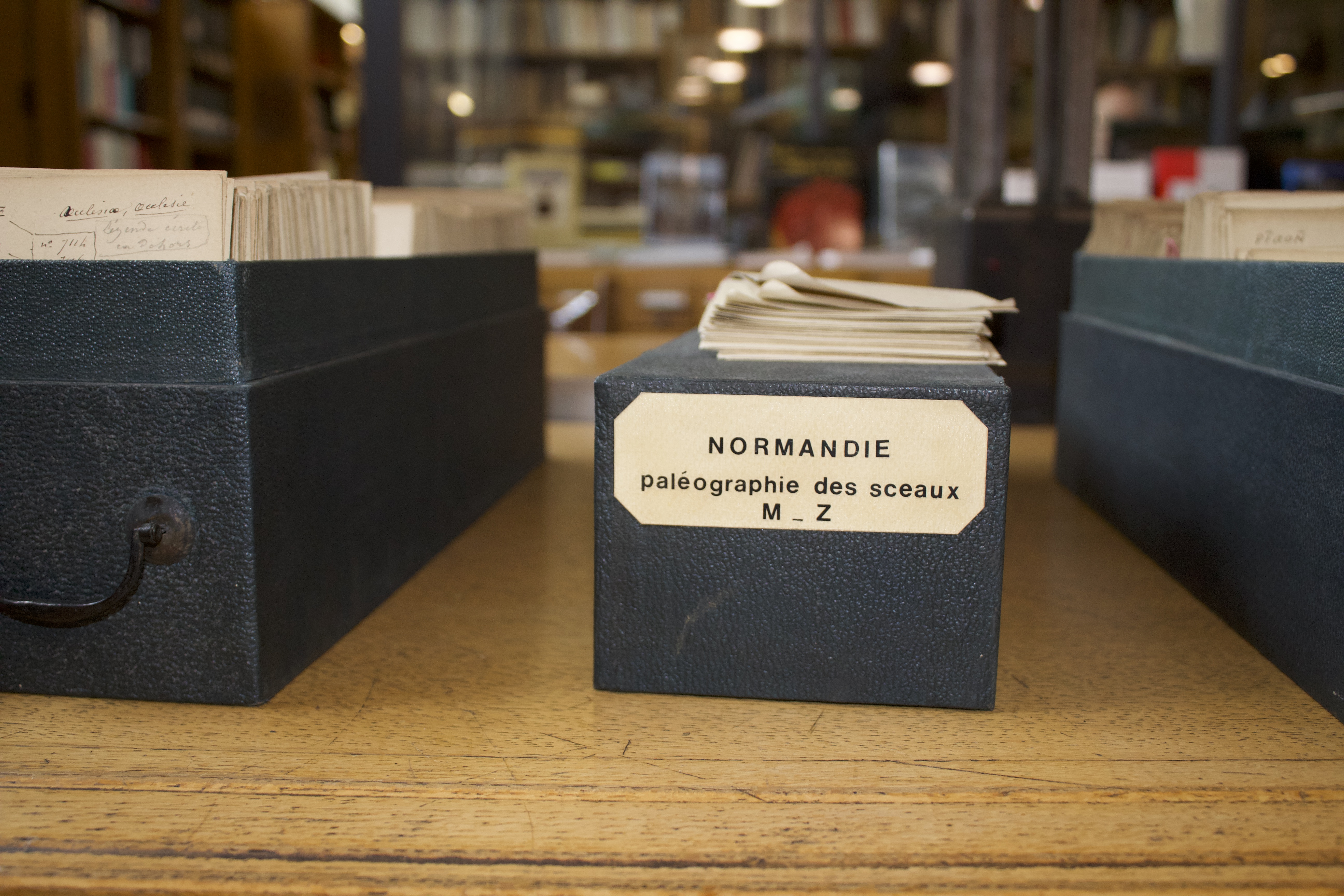ANRT Sigilla
Délia Préteux zoomInitiated by the Centre d’Études Supérieures de Civilisation Médiévale and the École Pratique des Hautes Études, the SIGILLA project led in 2015 to the creation of a digital database. Its objective is to collect, perpetuate and make available to researchers the vast collections of wax seals and casts preserved in France at the National Archives.
Within the partnership’s framework between the SIGILLA Consortium and the Atelier National de Recherche Typographique, a research program for the SIGILLA epigraphic module is being developed to produce a dedicated typographic tool for transcribing sigillographic legends.
The epigraphy of the seal presents many specificities related to historical and stylistic periods as well as to writing and abbreviations procedures intimately linked to the support and the materiality of the sources. The study thus proceeds from a vast work of form analysis and identification of the allographs, punctuation marks and diacritics, special characters, abbreviations and abbreviate signs, the numerous ligatures induced by the smallness of the object, sometimes the imagination of certain engravers.
As a start, the field was narrowed to a study of a precise corpus: the inventory of Normandy’s seals containing 3187 sources. The inventory covers an extended period, the sources date from the 11th century to the 18th century. This time frame considers a significant evolution of writing and the transformations overtime of the spelling of the Latin alphabet.
The project’s stakes direct the research towards the elaboration of a typology of typefaces, which allows the restitution of all the observed signs and agrees on historical and stylistic periods. Nevertheless, the numerous variations and particularities from one source to another allow the drawing of typefaces to question the level of represented detail. How a single instance can represent a multitude of shapes derived from the same model with slight differences? Between the structural and morphological appreciation of the letter and the singularity of each source, the ambition is to elaborate a unified typeface for each period, thus placing itself as a tool on the Sigilla database, which can be used more widely for the editorial and transcription problems of sigillography.




